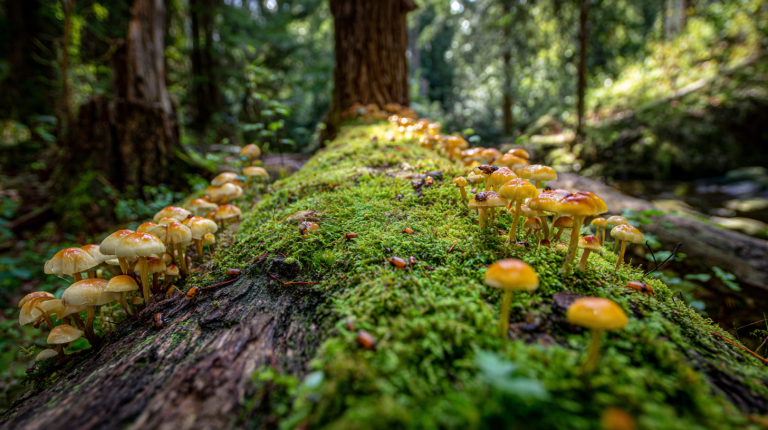8 Super Interesting Comparisons Between Mars and Earth for Kids

Have you ever looked up at the night sky and been fascinated by the red glow of Mars?
This enchanting planet has captured the imagination of people for ages.
While Mars and Earth have some things in common, they also have many interesting differences that make them unique.
In this article, we’ll present some fun facts about Mars for kids and compare it to our planet, Earth.
We’ll explore how these two worlds are alike and differ in size, distance from the Sun, atmosphere, temperature, and more.
Get ready to learn some amazing facts about the Red Planet and see how it stacks up against the Blue Planet we call home.
By the end of this journey, you will have a newfound appreciation for the incredible diversity of our solar system and the special place Earth occupies within it.
Insightful Comparison Between Earth and Mars for Kids

The following segment will detail ideas on an insightful comparison between Earth and Mars and some generic parameters.
1. Size and Distance
Regarding size, Mars is about half the diameter of Earth. Mars would be about as big as a cherry if Earth were the size of a nickel.
Mars has a 6,792 diameter, while Earth’s is 12,742 kilometers. It is farther away from the Sun than Earth.
On average, Mars orbits the Sun at a distance of about 228 million kilometers, while Earth orbits at about 150 million kilometers. This means that Mars is about 1.5 times farther from the Sun than Earth.
2. Atmosphere
Earth’s atmosphere is crucial in supporting life as we know it. It comprises 78% nitrogen, 21% oxygen, and trace amounts of other gases.
This composition allows us to breathe and protects us from harmful radiation.
Mars’s atmosphere is much thinner than Earth’s and has a different composition.
It comprises 95% carbon dioxide, 2.7% nitrogen, 1.6% argon, and only 0.13% oxygen. This means that humans would need special equipment to breathe on Mars.
3. Temperature
Earth’s average temperature is around 15°C (59°F), although it varies depending on location and season.
We experience various temperatures, from the scorching heat of deserts to the frigid cold of the poles.
Mars is much colder than Earth because it is farther from the Sun. Its average temperature is about -63°C (-82°F).
However, temperatures can fluctuate greatly, ranging from -143°C (-225°F) at the poles during the winter to a more comfortable 35°C (95°F) during the day near the equator.
4. Water
Earth is nicknamed the “Blue Planet” because about 71% of its surface is water. Our vast oceans, lakes, rivers, and ice caps support diverse life.
On Mars, water exists mainly as ice. Scientists have found evidence of water ice at the poles and underground reservoirs.
While Mars may have had liquid water flowing on its surface in the distant past, it is now a dry and barren world.
5. Moons
Earth has one natural satellite, the Moon, which orbits our planet and influences tides and other natural phenomena.
Mars, on the other hand, has two small moons named Phobos and Deimos. These moons are much smaller than Earth’s Moon and have unusual shapes.
Phobos is about 22.2 kilometers in diameter, while Deimos is even smaller at about 12.6 kilometers.
6. Length of Day and Year
Earth rotates on its axis once every 24 hours, which we define as a day. This rotation gives us our familiar cycle of day and night.
Mars has a slightly longer day, known as a sol, which lasts about 24 hours and 37 minutes. This means a day on Mars is about 40 minutes longer than Earth’s.
Regarding the length of a year, Earth takes about 365.25 days to complete one orbit around the Sun.
This is why we have leap years every four years to keep our calendars in sync with Earth’s orbit.
Mars takes longer to complete its orbit because it is farther from the Sun. A Martian year lasts about 687 Earth days, which is almost twice as long as a year on Earth.
7. Gravity
Earth’s gravity is the force that keeps us grounded and attracts objects towards the planet’s center. It is responsible for the weight we feel and the way objects fall.
Mars has weaker gravity than Earth. Its surface gravity is about 38% of Earth’s gravity.
This means that if you weighed 100 pounds (45 kilograms) on Earth, you would weigh only 38 pounds (17 kilograms) on Mars.

8. Seasons
Due to its tilted axis and orbit around the Sun, Earth experiences four seasons: spring, summer, autumn, and winter.
Mars also has seasons, but they are about twice as long as Earth’s because of Mars’ longer years.
Martian seasons are also more extreme because of the planet’s thin atmosphere and eccentric orbit.
Conclusion
From the size and distance to the atmosphere, temperature, water, moons, length of day and year, gravity, and seasons, Mars and Earth have similarities and differences that make them fascinating worlds to compare.
We hope these fun facts about Mars for kids have sparked your curiosity and encouraged you to learn more about our planetary neighbor.
As we continue to explore Mars through missions like NASA’s Perseverance rover, we are uncovering more and more about the Red Planet’s past and present.
Who knows what exciting discoveries await us in the future? Perhaps one day, humans will set foot on Mars and experience its wonders firsthand.
Until then, we can marvel at our solar system’s incredible diversity and beauty, knowing that Earth and Mars are just two of the many worlds that make it so captivating.






